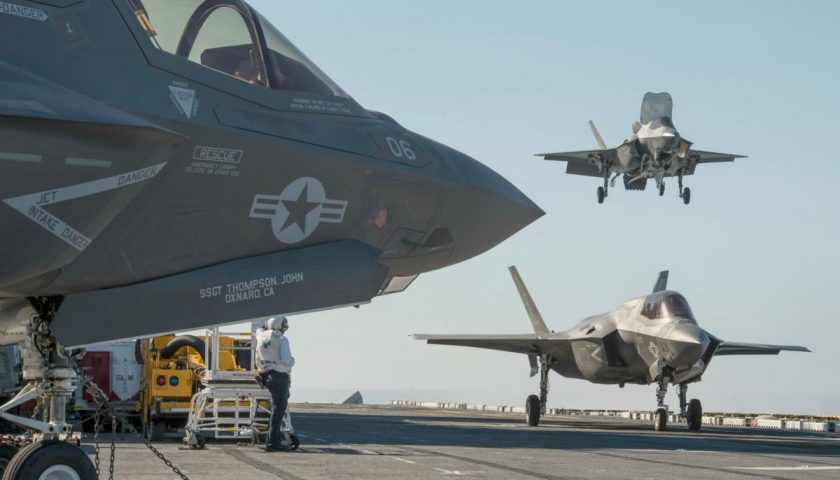On the occasion of the Pentagon press conference during the announcement of the order for lots 12, 13 and 14 of the F35 aircraft, i.e. 478 aircraft for $34 billion, the American authorities also communicated the evolution of the availability of its fleet, which would have increased in one year from 55% to 73%, a level close to the 80% demanded by General Mattis when he was Secretary of Defense. Improving this availability is attributed to the implementation of new stock management and spare parts ordering procedures implemented by Lockheed-Martin, which would have made it possible to resolve stock shortages leading to frequent aircraft downtime.
After confirming a unit price of F35A below the $80 million mark, at $77 million or €69 million, for the devices from lot 14, and a unit price of €91 million for the ADAC/V F35B version, this is therefore further good news for Lockheed-Martin customers, who sees its program respect the forecasts of costs announced. This is, however, less the case for its competitors, including the European manufacturers Dassault, Saab and Eurofighter, who are already struggling to impose their aircraft against the F35, and who will have even more difficulty winning contracts as it multiplies announcements of success.

for lot 14 devices.
Certainly, we must not forget that despite a very aggressive acquisition price, and an availability which seems satisfactory, the F35 remains, by far, the most expensive device in terms of ownership costs, on the international market. The subject is also carefully avoided in press conferences, because the manufacturer, like the US Air Force, lacks arguments to put forward in this area. Certainly, again, the F35 still suffers from several malfunctions serious, and sometimes serious limitations in terms of operational capacity, such as for example its low capacity to withstand strong accelerations, or its difficulties in maintaining supersonic level flight. But between the call price argument, equal to that of a Rafale and significantly cheaper than a Eurofighter Typhoon, that of availability comparable to those of European aircraft, its own stealth and data fusion capabilities, and the power of American lobbying which applies, in the first place, within NATO itself, European manufacturers will having more and more difficulty positioning their own aircraft during international competitions, especially as Lockheed is locking the market from below with its F16 block70 Viper.
In this, the competitions Finnish et Swiss will be particularly interesting to follow. From an objective point of view, the F35A is not suitable for either of these air forces. In Switzerland, the Rafale appears to be the most appropriate choice, whilein Finland, Saab's JAS39 Gripen E/F competes for first place. Furthermore, none of these countries is a formal ally of the United States, not belonging to NATO. If Finland is a member of the European Union, Switzerland also has privileged economic and social ties with the Union, France, Germany and Italy in particular. The choice of these two nations to replace their F18 (and F5 for Switzerland) will therefore be a faithful reflection of the balance of power that exists today on the combat aircraft market, apart from any pressure linked, for example, to NATO.
